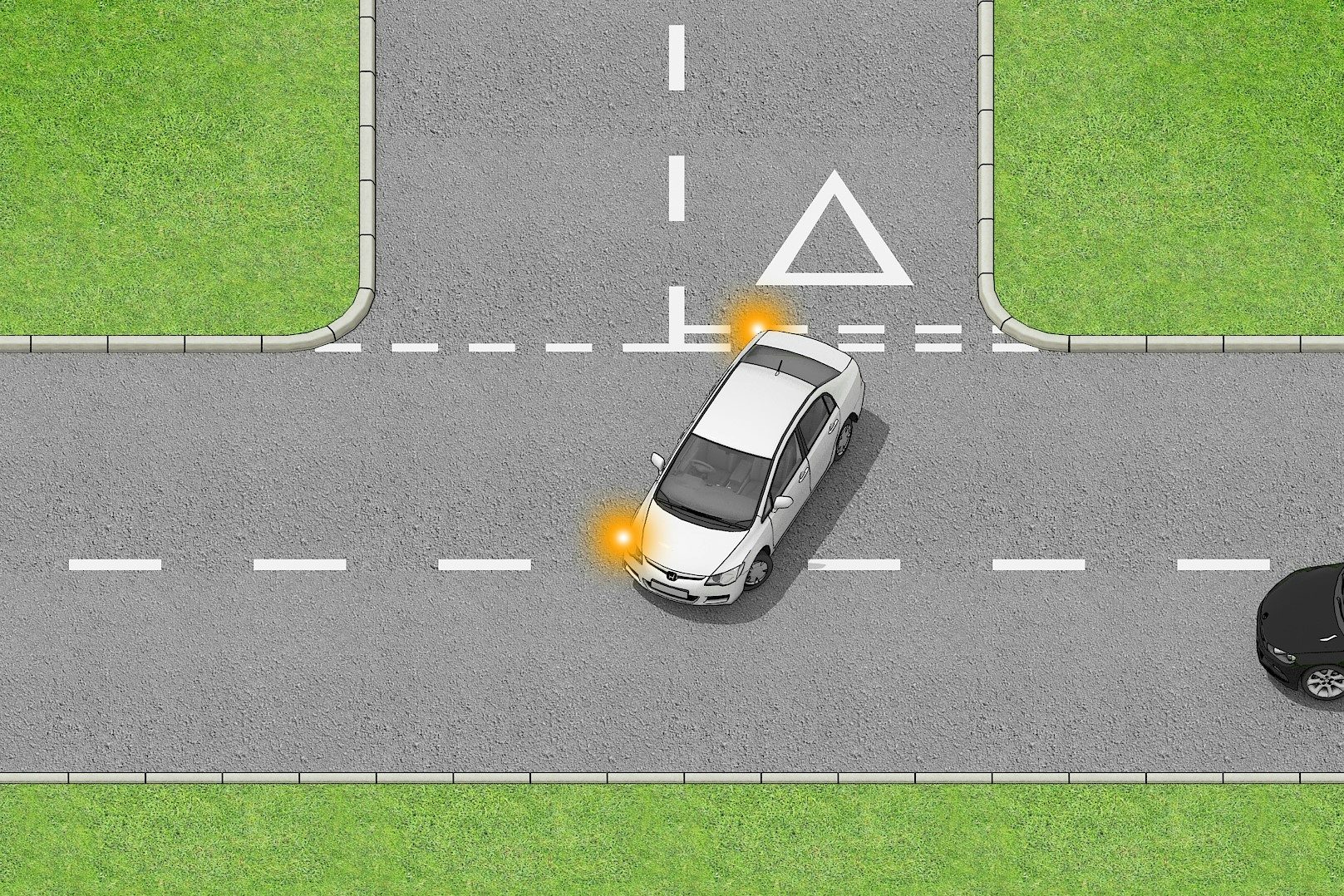
Always plan your turns. Position yourself in the correct lane for your turn well in advance, and use your indicators to warn other road users of your intention to turn. Be careful and try to make eye contact with other road users and pedestrians.
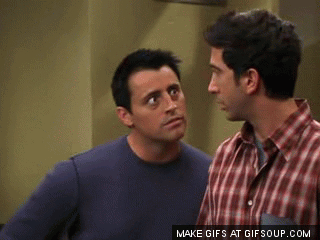
When turning:
- Plan ahead. You need to start slowing down in time, change gears if necessary, and decide if you need to stop completely or not
- Position yourself in the correct lane. If you need to change lanes, you need to find a safe gap, check mirrors and blind spots (the areas of the road you can’t see by using your mirrors), and use indicators to give sufficient warning
- Scan for other vehicles and pedestrians. You need to be aware of how road users and pedestrians around you are behaving. A pedestrian might be about to cross the road or a car near you might suddenly change lanes
- If turning right, you need to find a safe gap in oncoming traffic. Be aware of potential hazards on or near the road
Wait for an additional indication
Keep in mind that everyone makes mistakes, so never assume that other road users will give way just because they should or because they’re signalling. Wait for an additional indication that the other road user will give way e.g. signalling AND slowing down.
Right turns
Well before you turn right you should:
- use your mirrors to make sure you know the position and movement of traffic behind you
- give a right-turn signal
- take up a position just left of the middle of the road or in the space marked for traffic turning right
- leave room for other vehicles to pass on the left, if possible.
Wait until there is a safe gap between you and any oncoming vehicle. Watch out for cyclists, motorcyclists, pedestrians and other road users. Check your mirrors and blind spot again to make sure you are not being overtaken, then make the turn. Do not cut the corner.
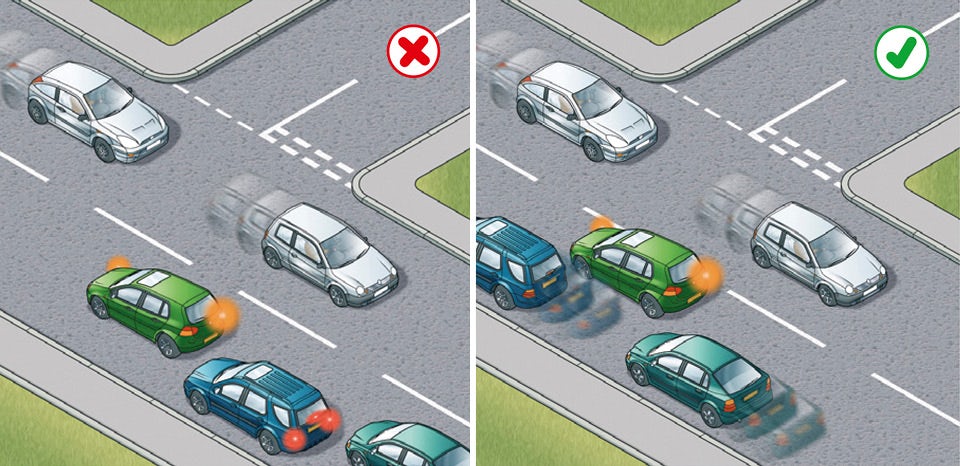
Take great care when turning into a main road; you will need to watch for traffic in both directions and wait for a safe gap.
If an oncoming vehicle is also turning right
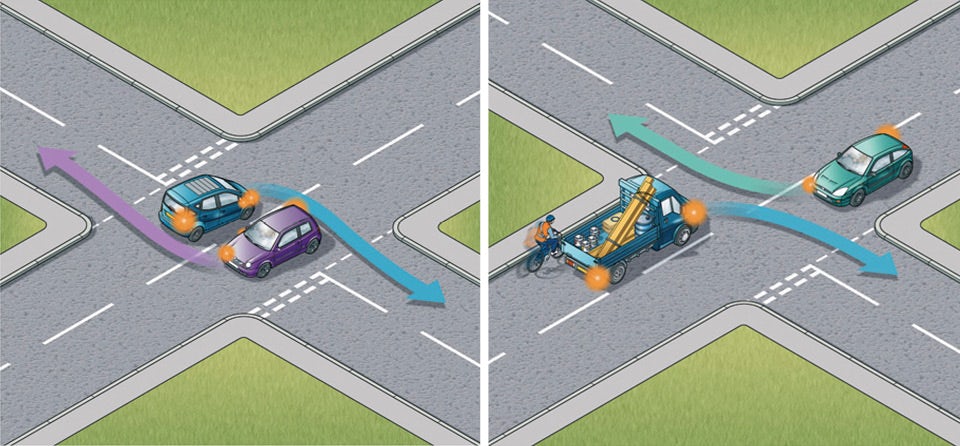
When turning right at crossroads where an oncoming vehicle is also turning right, there is a choice of two methods
- turn right side to right side; keep the other vehicle on your right and turn behind it. This is generally the safer method as you have a clear view of any approaching traffic when completing your turn
- left side to left side, turning in front of each other. This can block your view of oncoming vehicles, so take extra care. Cyclists and motorcyclists in particular may be hidden from your view. Road layout, markings or how the other vehicle is positioned can determine which course should be taken.
Left turns

Use your mirrors and give a left-turn signal well before you turn left. Do not overtake just before you turn left and watch out for traffic coming up on your left before you make the turn, especially if driving a large vehicle. Cyclists, motorcyclists and other road users in particular may be hidden from your view.
When turning:
- keep as close to the left as is safe and practicable
- give way to any vehicles using a bus lane, cycle lane or tramway from either direction.
Single Carriageways
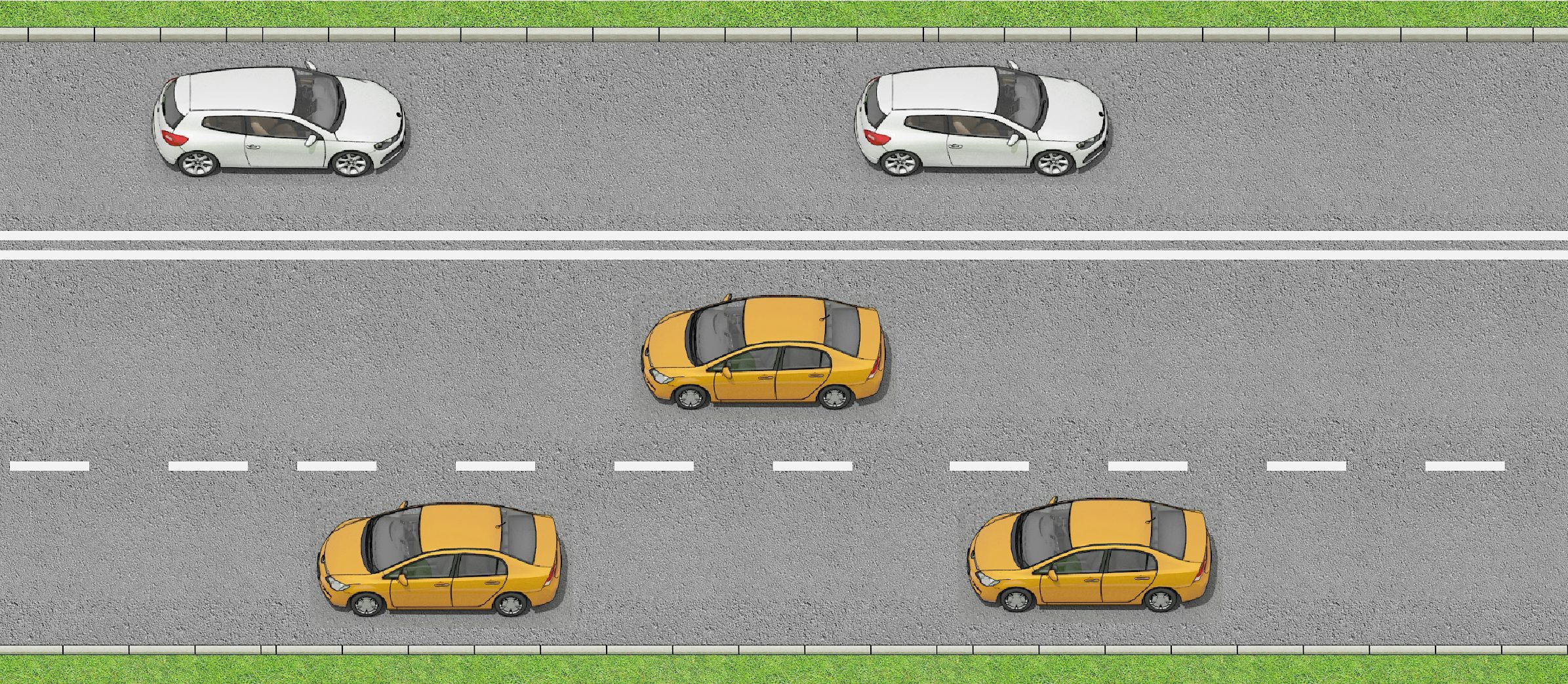
Where a single carriageway has three lanes and the road markings or signs do not give priority to traffic in either direction:
- use the middle lane only for overtaking or turning right. Remember, you have no more right to use the middle lane than a driver coming from the opposite direction
- do not use the right-hand lane
Dual Carriageways
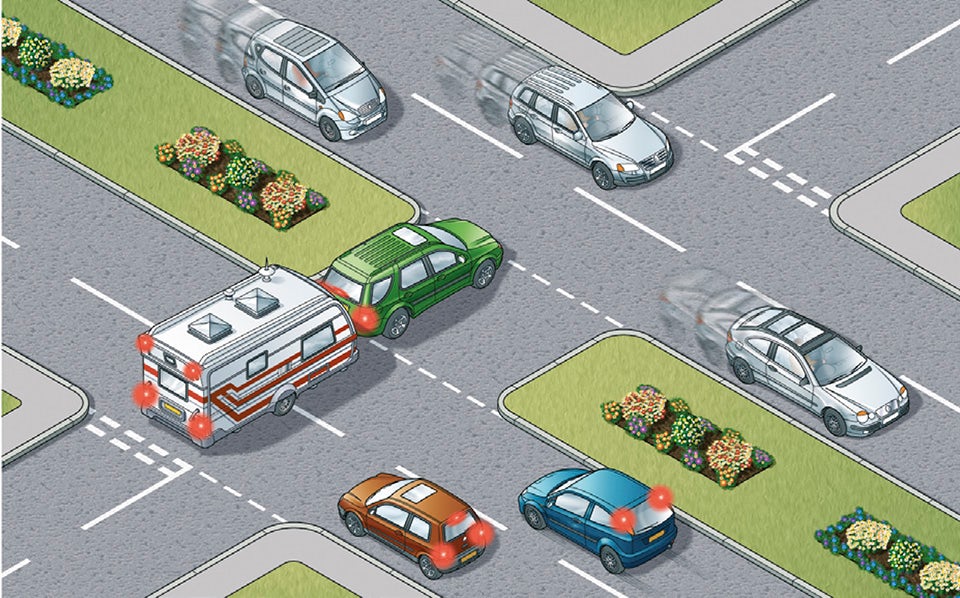
When crossing or turning right, first assess whether the central reservation is deep enough to protect the full length of your vehicle.
If it is, then you should treat each half of the carriageway as a separate road. Wait in the central reservation until there is a safe gap in the traffic on the second half of the road.
If the central reservation is too shallow for the length of your vehicle, wait until you can cross both carriageways in one go.
One-way streets
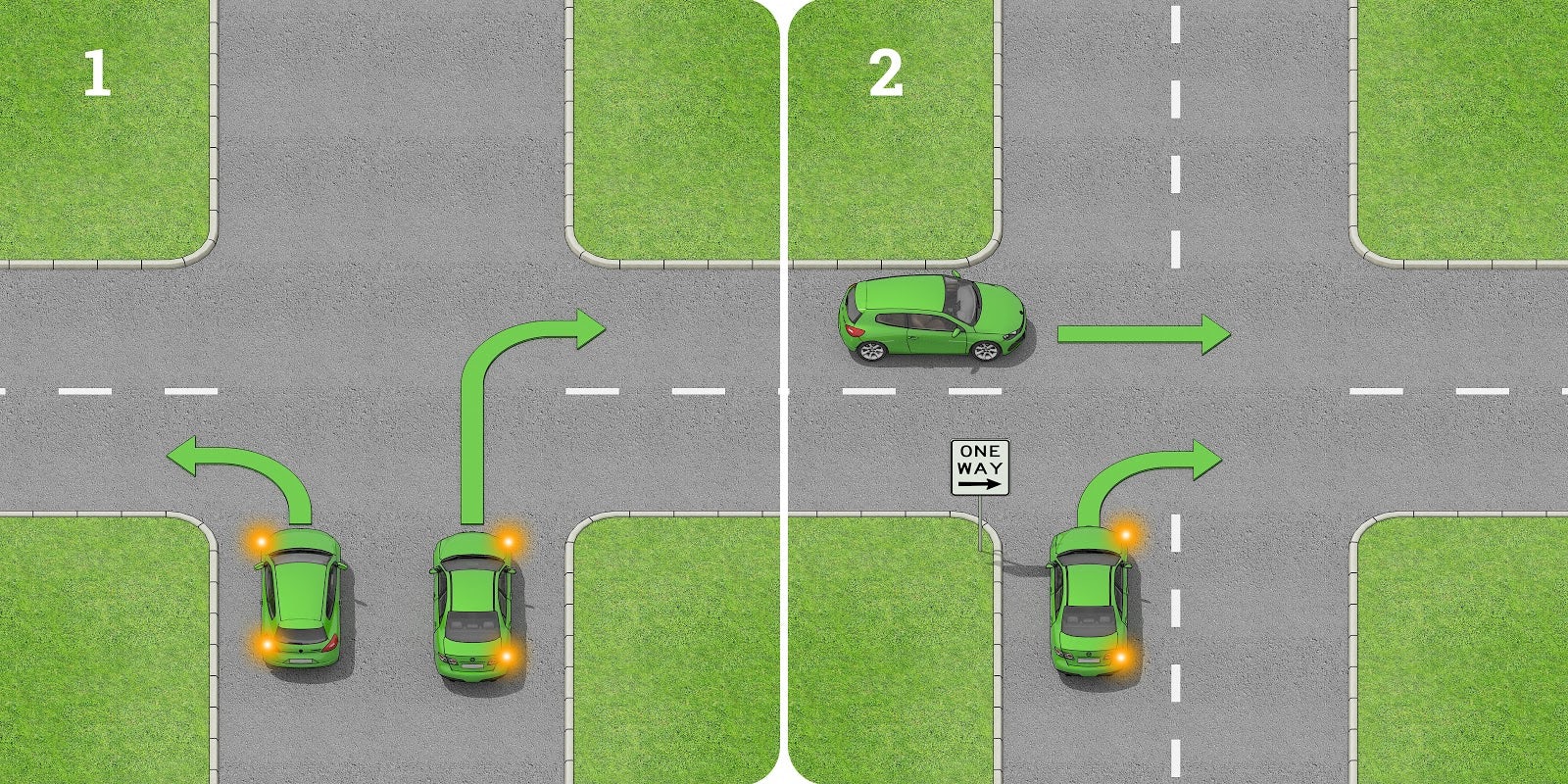
Unless road markings or signs indicate otherwise:
- Turning from a one-way street should be done by keeping your vehicle close to the side of the road that you’re turning into
- Turning into a one-way street should be done by turning into the nearest lane
U-turns
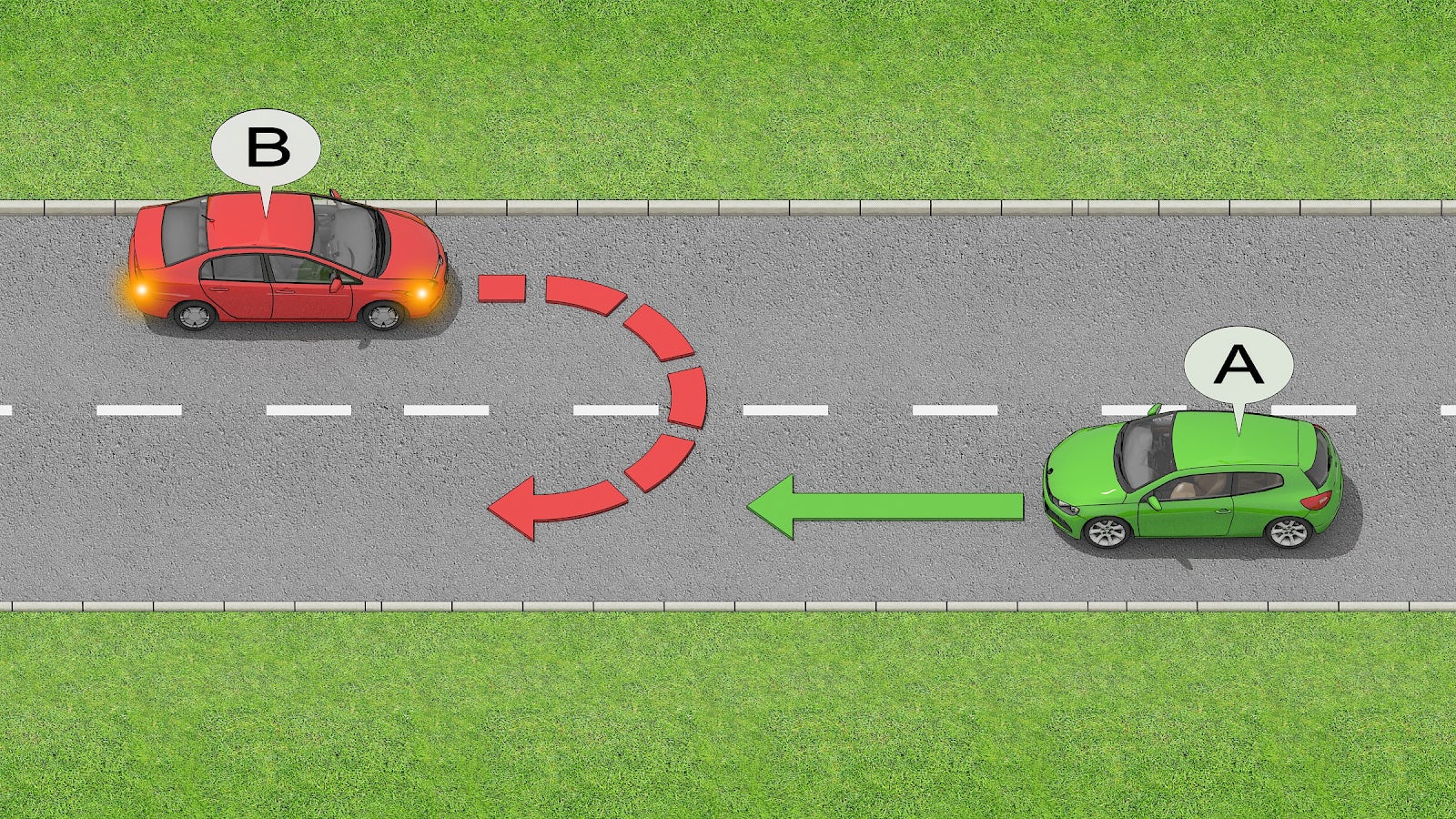
You can do a U-turn anywhere, if it’s safe and not prohibited. However, avoid making a U-turn unless necessary. When you make a U-turn:
- You must have a clear view of traffic
- You must complete the U-turn without disrupting other traffic
- You must start your U-turn from as close as you can to the centre of the road
3-point turns

A turn used on roads that aren’t as wide as your car’s turning circle. A 3-point turn requires time and space, so make sure the road is clear and safe in both directions before you turn. Driving around the block is often a safer alternative than making a 3-point turn.
